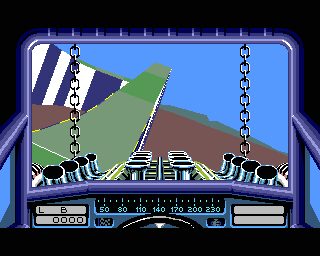F1 Racing Simulation by Ubi Soft was an attempt to deliver one of the most realistic and immersive Formula 1 racing experiences of its time. Released in 1997 for PC, the game was developed by Ubi Soft’s French division and sought to rival the likes of Grand Prix II by MicroProse and Formula 1 by Bizarre Creations. Featuring officially licensed 1996 season tracks (but not teams or drivers), F1 Racing Simulation was a visually stunning and technically advanced game.
F1 Racing Simulation set a new standard for realism in PC racing games. With high-resolution textures, detailed car models, and advanced lighting effects, it provided a visually rich experience that few competitors could match at the time. The game also featured impressive weather effects, with dynamic rain and wet track conditions significantly impacting handling. Unlike earlier F1 sims, which often felt sterile, this game delivered an immersive atmosphere through realistic track environments and dynamic camera angles.
The physics engine was another major highlight. While not as hardcore as Grand Prix 2, it struck a balance between simulation and accessibility. Cars handled with weight and responsiveness, and players had to manage tire wear, fuel consumption, and realistic damage models. Compared to Formula 1 (1996) on PlayStation, F1 Racing Simulation offers a much deeper experience, as Bizarre Creations’ title leaned towards arcade-style handling. Ubi Soft’s game, on the other hand, requires precise braking, controlled acceleration, and careful cornering to achieve competitive lap times.
The AI was considerably more advanced than what was seen in earlier F1 sims. Opponents reacted dynamically to player movements, fought aggressively for positions, and even made mistakes, adding to the realism. This level of unpredictability helped the game feel more like a real-life race than a pre-scripted gaming experience. The game also featured robust customization options, allowing players to tweak car setups, adjust weather conditions, and even fine-tune AI difficulty.
One of the most innovative additions was the inclusion of a virtual driving school, which provided in-depth tutorials and feedback for players looking to improve their skills. This feature made F1 Racing Simulation stand out among its contemporaries, as it actively helped players understand racing techniques and strategies rather than just throwing them onto the track.
Compared to Geoff Crammond’s Grand Prix II, which was considered the gold standard of F1 simulations, Ubi Soft's title had the advantage of a more modern graphics engine and improved AI, but Grand Prix 2 still held the edge in terms of physics realism and community mod support. Ubi Soft’s title, however, was a strong competitor and appealed to players who wanted a visually polished, yet still deep and engaging, Formula 1 experience. While it may not have reached the legendary status of Crammond’s series, it remains a beloved title among racing sim enthusiasts and a testament to Ubi Soft’s commitment to high-quality motorsport games.













